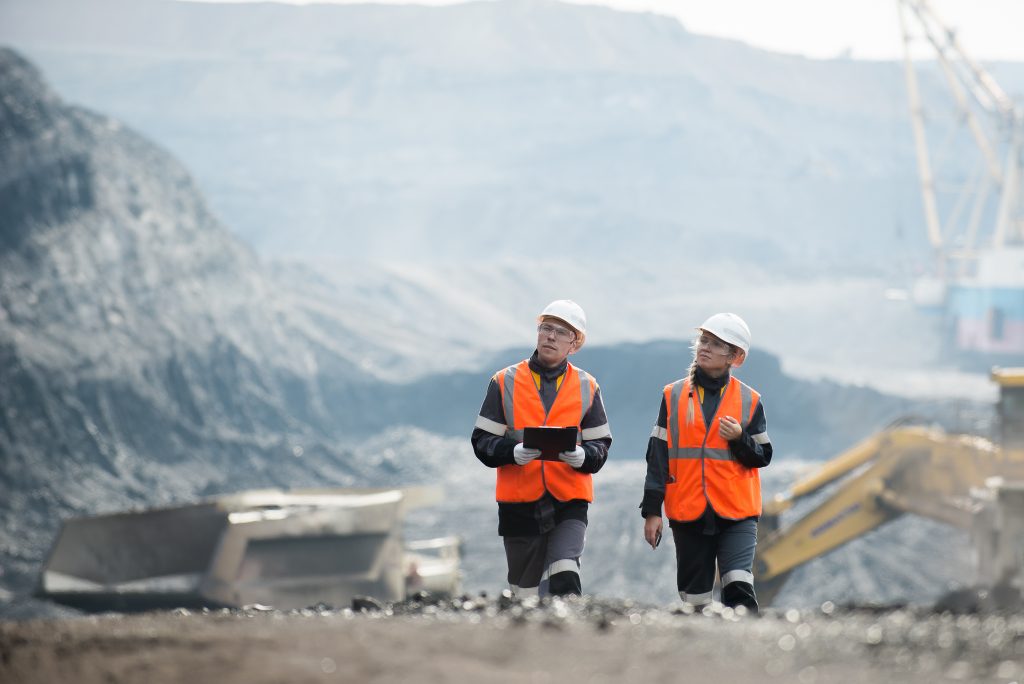WORC’s new report highlights how, as the coal industry collapses, mine reclamation jobs will be vital to the transition of coal communities.
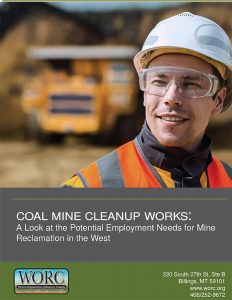
The collapse of the coal industry is devastating small communities across the Western United States. Reclaiming these mined lands quickly could create up to 4,800 full-time equivalent jobs per year in the critical two to three year period after mine closure according to a report released by WORC on July 28th. The report, Coal Mine Cleanup Works, estimates potential reclamation job creation for four Western coal states (Colorado, Montana, North Dakota, and Wyoming) and provides recommendations for decision-makers to ensure cleanup is fully funded and employs the local workforce. These potential yearly jobs represent up to 65% of the current surface mining workforce in the four-state region.
These findings offer a rare bright light of opportunity for coal communities that are facing massive lay-offs and lost revenue as the coal industry crumbles. Reclamation is one of the few immediately available job opportunities for local workers after a mine shuts down, and the report finds that these jobs are ideally suited for current or former miners.
Most coal communities need to embrace a wide variety of economic development approaches to weather the shocks of this current energy economic transition. An important component of a just economic transition is having some immediate job-creation solutions, like cleanup jobs, paired with longer-term job solutions like building a wind farm or supporting new businesses through a revolving loan fund. Many state and local governments, however, are not aware of the local employment potential associated with reclamation, nor what measures they should be advocating for to maximize this job creation.
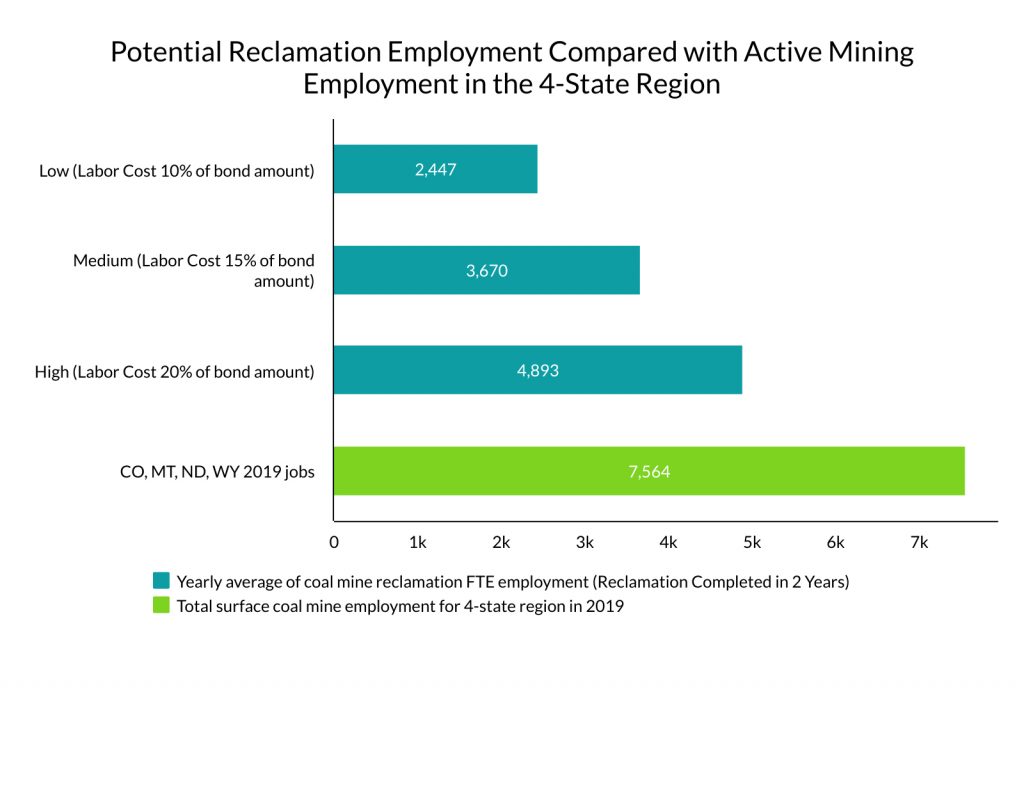
“Reclamation jobs were really important for me and my community after the New Horizon Mine shut down,” said Roger Carver, a retired coal miner and former president of UMW Local Union 1281, and member of the Western Colorado Alliance. “We at the union had to fight for these jobs because we knew workers were in limbo and didn’t know when the next paycheck was going to be. Plus, it felt good to be part of the cleanup and to repair the land that is part of my home.”
These findings offer a rare bright light of opportunity for coal communities that are facing massive lay-offs and lost revenue as the coal industry crumbles.
Coal Mine Cleanup Works points out that reclamation jobs cannot replace all the jobs and revenue coal mines provide, but that it’s one piece of a forward-looking approach to adapt to a changing energy economy.
“Just last summer Blackjewel shut down their two mines in Campbell County, Belle Ayr and Eagle Butte, and overnight hundreds of people are out of a job. We in Wyoming are living with that threat over our heads. At any time, these mines could just shut down and what will people do? A few years of extra cleanup work for a few hundred people is significant for our rural coal communities. It gives people time to plan and prepare for the next step,” added Stacy Page, a Powder River Basin Resource Council member and former Wyoming Department of Environmental Quality regulator.
“A few years of extra cleanup work for a few hundred people is significant for our rural coal communities. It gives people time to plan and prepare for the next step.”
“I ranched above the Signal Peak Mine, and the threat of water loss and damaged land was an unrelenting burden to my ranching operation and will be the same to other operators in the Signal Peak mine plan. We need to ensure the land and aquifer here are properly cleaned up, so that this area can be safely used by ranchers and others once the mine closes shop,” said Ellen Pfister, a Northern Plains Resource Council member and retired Bull Mountain rancher. “The market is winding down the coal industry, and these workers are going to need jobs to support their families. We can provide good-paying jobs to these skilled workers while restoring the land to productive use. If we work together, we can seize this opportunity to build a more resilient future for coal workers, ranchers, and rural communities across the West.”
Never miss an opportunity to make the West even better: receive our action alerts.
The report estimates that the workforce needed to complete surface mine reclamation is between 4,893 and 9,786 job-years. End-of-life mine reclamation takes approximately two and three years to complete, meaning that between 1,631 and 4,893 full-time equivalent workers would be needed for each year of cleanup. For comparison, surface mines in these four states employed 7,564 workers in 2019.
“The market is winding down the coal industry, and these workers are going to need jobs to support their families. We can provide good-paying jobs to these skilled workers while restoring the land to productive use.”
For Montana specifically, an estimated 1,150 job-years would be needed, translating to 383 to 575 full-time jobs per year (depending on pace of cleanup). In Wyoming, an estimated 5,100 job-years would be needed, or 1,700 to 2,550 full-time jobs per year. Reclamation in North Dakota an estimated 830 job-years, which is 277 to 415 full-time jobs per year. And finally, reclamation work in Colorado would require 259 job-years, translating to 86 to 129 full-time jobs per year.
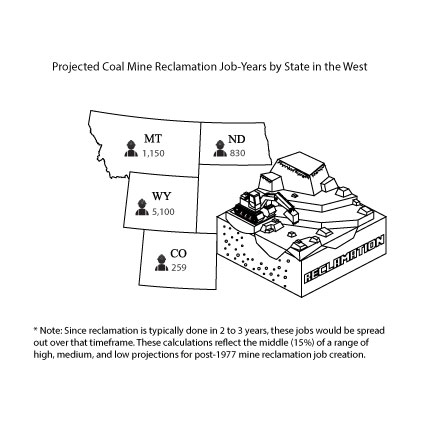
This report builds on previous research by WORC that found that more than a third of all land strip mined for coal in the Western U.S. awaits cleanup and the threat of underfunded cleanup looms large. Although reclamation is required by law, a weakening coal industry may try to evade or delay its reclamation obligations, and existing policy loopholes only exacerbate the problem. Coal Mine Cleanup Works finds that delayed and underfunded reclamation are the biggest hurdles to getting laid-off miners back on the job doing cleanup work.
Delayed and underfunded reclamation are the biggest hurdles to getting laid-off miners back on the job doing cleanup work.
The report recommends several actions to minimize the risks of underfunded and delayed mine cleanup, and maximize the potential of hiring the impacted local workforce:
- State and federal decision-makers should end insufficient and insecure reclamation bonds
- Regulators must ensure that all cleanup liabilities are assumed by new mine owners and that new mine owners are poised to fulfill those obligations.
- State regulators need to be ready to seize bonds immediately when a mining company abandons its mines in order to initiate reclamation immediately.
- Federal and state authorities should work to accelerate the pace of contemporaneous reclamation at active mines.
- Federal, state, and local policymakers should institute policies that facilitate and incentivize local hiring for mine reclamation.
Download the full report.
Learn more:
Fixing Abandoned Mine Sites is Essential for a Transition Economy
States Face Massive Coal Mine Cleanup as Closures Loom, Says New WORC Report
WORC Network Joins Coalition to Create National Economic Transition Platform
WORC Interns Take Flight with the Task of Reporting on Coal Mine Reclamation
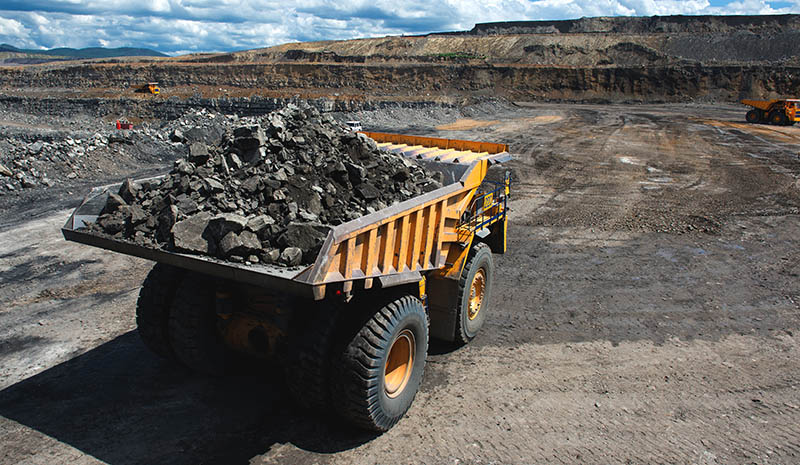
Help create a healthy and sustainable West. Support WORC today.

